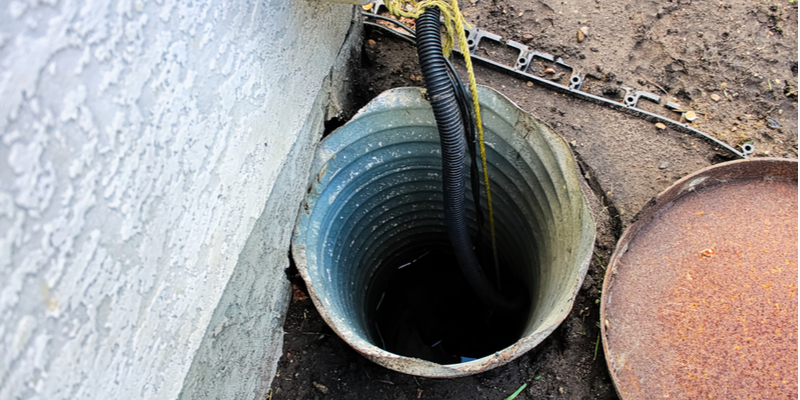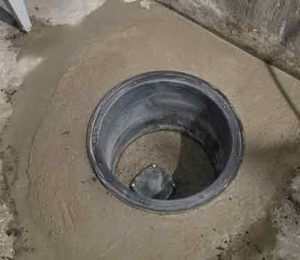Effective Techniques for Caring for Your Sump Pump
Effective Techniques for Caring for Your Sump Pump
Blog Article
We have stumbled on this post about Cleaning & Maintenance Tips for Your Home's Sump Pump listed below on the internet and thought it made perfect sense to write about it with you on this page.

Sump pumps are crucial elements in several homes, especially in locations susceptible to flooding or excessive dampness. They help prevent water damage by effectively getting rid of excess water from cellars or crawl spaces. Nonetheless, like any other device, sump pumps need regular upkeep to ensure they work effectively when needed the most. Cleansing your sump pump is a vital part of its maintenance, and recognizing exactly how to do it properly can save you from pricey repair services and prospective calamities.
Intro
Keeping a clean sump pump is vital for its proper functioning and durability. Ignoring this vital job can cause obstructions, breakdowns, and eventually, water damage to your building. For that reason, finding out exactly how to cleanse a sump pump is important for property owners who rely upon these tools to keep their basements dry and secured.
Comprehending the Sump Pump
Prior to diving right into the cleaning procedure, it's necessary to have a basic understanding of just how a sump pump works. Normally mounted in a pit or container below the cellar floor, a sump pump consists of numerous key parts, including a pump, a float button, and a discharge pipeline. When water accumulates in the pit, the float button activates the pump, which after that pumps the water out via the discharge pipe, away from the structure's foundation.
Indications of a Dirty Sump Pump
Knowing when your sump pump requires cleansing is important for avoiding potential breakdowns. Some common signs that show a dirty sump pump include unusual noises throughout operation, reduced water circulation, and visible particles in the pit. If you discover any of these signs and symptoms, it's vital to clean your sump pump immediately to prevent any additional issues.
Getting ready for Cleansing
Prior to you start cleaning your sump pump, it's necessary to take some safety and security preventative measures. Begin by turning off the power to the pump to avoid any electric mishaps. Additionally, put on proper protective gear, such as gloves and goggles, to shield yourself from dirt, particles, and possible microorganisms.
Detailed Overview to Cleaning Up a Sump Pump
Shutting down the Power
Begin by detaching the power supply to the sump pump to prevent any mishaps while cleaning.
Removing Debris and Dust
Utilize a bucket or a scoop to remove any noticeable particles, dirt, or sediment from the sump pit. Dispose of the debris correctly to avoid it from blocking the pump or the discharge pipe.
Cleaning up the Pump and Float Switch
As soon as the pit is clear of particles, thoroughly eliminate the pump from the pit. Inspect the pump and the float button for any indications of damage or wear. Make use of a soft brush or cloth to clean up the surfaces and eliminate any accumulated gunk.
Purging the System
After cleaning the pump and float button, flush the sump pit with clean water to eliminate any type of staying dirt or sediment. This will certainly help make certain that the pump operates smoothly and efficiently.
Checking for Appropriate Functioning
Prior to re-installing the pump, execute a quick examination to ensure that the float switch activates the pump properly. Put some water into the sump pit and observe the pump's procedure. If everything is functioning properly, you can rebuild the pump and reconnect the power supply.
Upkeep Tips to Maintain Your Sump Pump Clean
In addition to periodic cleaning, there are several upkeep ideas you can follow to maintain your sump pump in optimum condition:
Conclusion
Cleaning your sump pump is an essential facet of its maintenance and makes sure that it operates properly when you need it the most. By following the steps detailed in this overview and integrating normal maintenance into your regimen, you can expand the lifespan of your sump pump and protect your home from water damages.
6 STEPS ON HOW TO CLEAN A SUMP PUMP PROPERLY
UNDERSTANDING SUMP PUMPS
Your sump pump plays a crucial role in protecting your home by managing and removing excess water. It primarily functions as a “shield”, guarding your basement against the damaging effects of water accumulation. The pump is housed in a sump pit in the lowest part of your basement, and its job is to pump out any water that collects there.
During heavy rainfalls or when snow melts rapidly, water can infiltrate your basement, posing potential risks like flooding, structural damage, and harmful mold growth. Here, the sump pump springs into action, pumping out the intruding water and directing it away from your home.
SAFETY FIRST
Before cleaning, remember to prioritize safety. Disconnect the sump pump from the power source to prevent any accidental electric shocks. Also, wear sturdy gloves to protect your hands from any sharp or dirty components within the pump.
REMOVE THE SUMP PUMP
After ensuring your safety, the next step is to remove the sump pump from its pit. Doing this might require careful maneuvering as you don’t want to damage any pump components. Once removed, clean the sump pit to remove any accumulated debris or sludge.
INSPECT THE PUMP
Inspect the pump for any visible signs of wear or damage. Check the power cord, float switch, and impeller housing. If any components look worn out or damaged, consider replacing them to ensure optimal performance.
CLEAN THE PUMP
Thoroughly clean the pump with warm, soapy water. Make sure to rid it of any dirt, gravel, or other debris that might impede its performance. You can use a toothbrush to clean the small, hard-to-reach parts of the pump.
REINSTALL THE SUMP PUMP
Reinstall the pump into the sump pit Make sure it’s positioned correctly to remove the water effectively Once it’s back in place, reconnect it to the power source TEST THE PUMP
Finally, pour some water into the pit to ensure the pump works correctly. It should start automatically and begin pumping out the water; if it doesn’t, check the power source and the positioning of the pump.
Remember, while cleaning your sump pump is an essential part of home maintenance, hiring a professional plumber for a thorough inspection and cleaning at least once a year is also important. This will ensure that your pump is in optimal condition, ready to protect your home from potential water damage.
BEST PRACTICES FOR CLEANING SUMP PUMP DISCHARGE PIPES
Regular Inspection: Regularly inspect your discharge pipes, especially during heavy rainfall or snowmelt periods. Look for any signs of blockage or damage. Early detection of problems can prevent serious issues down the line. Periodic Cleaning: Over time, sediment and debris can accumulate in the discharge pipes, impeding the flow of water. Regular cleaning helps keep the pipes clear and functioning efficiently. You can use a high-pressure water jet to effectively clean the pipes. Insulation During Winter: In colder climates, discharge pipes can freeze, blocking the outflow of water. Protect your discharge pipes from freezing temperatures by insulating them with foam pipe insulation. This will ensure the sump pump can continue to discharge water even in freezing conditions. Proper Positioning: The discharge pipe should be positioned to direct water away from your home’s foundation. Improper positioning can lead to water seeping back into the basement. Ensure the pipe is long enough and angled correctly. Installation of a Check Valve: A check valve prevents water from flowing back into your sump pit after the pump has pushed it out. Installing a check valve helps maintain the efficiency of your sump pump and reduces the risk of flooding. Minimize Pipe Turns: Every curve or turn in the discharge pipe can decrease the efficiency of water flow. By minimizing turns and bends in your discharge pipe, you can increase the efficiency of your sump pump. https://www.fullspeedplumbing.com/how-to-clean-a-sump-pump-properly9999/

Do you like more info about How to Care for Your Sump Pump? Give a remark down below. We would be delighted to know your suggestions about this post. We are looking forward that you visit us again later on. Be sure to take a moment to distribute this page if you liked it. Thank-you for taking the time to read it.
Call Today Report this page